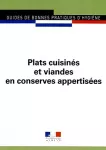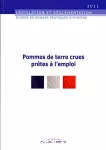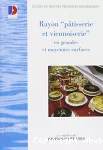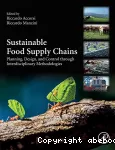Adresse
Infodoc : Réseau des bibliothèques et centres de documentation d'AgroParisTechFrance
contact

Catégories
|
RAMEAU , Nom commun , Aliments -- Entreposage
Aliments -- EntreposageSynonyme(s)Aliments -- Stockage Produits entreposés (aliments) |
Documents disponibles dans cette catégorie (16)
 Ajouter le résultat dans votre panier Faire une suggestion Affiner la recherche Interroger des sources externes
Ajouter le résultat dans votre panier Faire une suggestion Affiner la recherche Interroger des sources externes
 Livre
Livre978-0-323-28179-91 vol. (XVII-565 p.)
1 vol. (XVII-565 p.)ISBN : 978-0-323-28179-9 
 Livre
Livre978-0-12-815579-01 vol. (XIII-231 p.)
1 vol. (XIII-231 p.)ISBN : 978-0-12-815579-0 
 Livre
Livre978-2-7430-0207-71 vol. (552 p.)
1 vol. (552 p.)ISBN : 978-2-7430-0207-7 
 Livre
Livre978-0-632-05725-21 vol. (451p.)
1 vol. (451p.)ISBN : 978-0-632-05725-2 
 Livre
Livre978-0-367-33540-31 vol. (XVII-255 p.)
1 vol. (XVII-255 p.)ISBN : 978-0-367-33540-3 
 Livre
Livre978-1-138-33824-11 vol. (XVIII-726 p.)
1 vol. (XVIII-726 p.)ISBN : 978-1-138-33824-1 
 Livre25 EUR
Livre25 EUR978-2-11-077242-81 vol. (V-194 p.)
1 vol. (V-194 p.)Prix : 25 EUR ISBN : 978-2-11-077242-8 
 Livre26 EUR
Livre26 EUR978-2-11-077117-91 vol. (IV-125 p.)
1 vol. (IV-125 p.)Prix : 26 EUR ISBN : 978-2-11-077117-9 
 Livre14 EUR
Livre14 EUR978-2-11-076996-11 vol. (V-173 p.)
1 vol. (V-173 p.)Prix : 14 EUR ISBN : 978-2-11-076996-1 
 LivreConfédération des industries de traitement des produits des pêches maritimes (CITPPM) ; Fédération des industries d'aliments conservés (FIAC)
LivreConfédération des industries de traitement des produits des pêches maritimes (CITPPM) ; Fédération des industries d'aliments conservés (FIAC)978-2-11-077201-51 vol. (VI-329 p.)
1 vol. (VI-329 p.)ISBN : 978-2-11-077201-5 
 LivreComité national interprofessionnel de la pomme de terre (CNIPT) ; Centre technique de la conservation des produits agricoles (CTCPA)10 EUR
LivreComité national interprofessionnel de la pomme de terre (CNIPT) ; Centre technique de la conservation des produits agricoles (CTCPA)10 EUR978-2-11-076706-61 vol. (V-97 p.)
1 vol. (V-97 p.)Prix : 10 EUR ISBN : 978-2-11-076706-6 
 LivreCoop de France ; Fédération du négoce agricole (FNA) ; Syndicat national du commerce extérieur des céréales (SYNACOMEX)14 EUR
LivreCoop de France ; Fédération du négoce agricole (FNA) ; Syndicat national du commerce extérieur des céréales (SYNACOMEX)14 EUR978-2-11-076753-01 vol. (VII-121 p.)
1 vol. (VII-121 p.)Prix : 14 EUR ISBN : 978-2-11-076753-0 
 Livre
Livre978-2-11-076987-91 vol. (II-84 p.)
1 vol. (II-84 p.)ISBN : 978-2-11-076987-9 
 Livre3,80 EUR
Livre3,80 EUR978-2-11-075354-01 vol. (II-70 p.)
1 vol. (II-70 p.)Prix : 3,80 EUR ISBN : 978-2-11-075354-0 
 Livre
Livre978-0-08-100694-81 vol. (XVI-713 p.)
1 vol. (XVI-713 p.)ISBN : 978-0-08-100694-8 
 Livre
Livre978-0-12-813411-51 vol. (XXII-371 p.)
1 vol. (XXII-371 p.)ISBN : 978-0-12-813411-5





